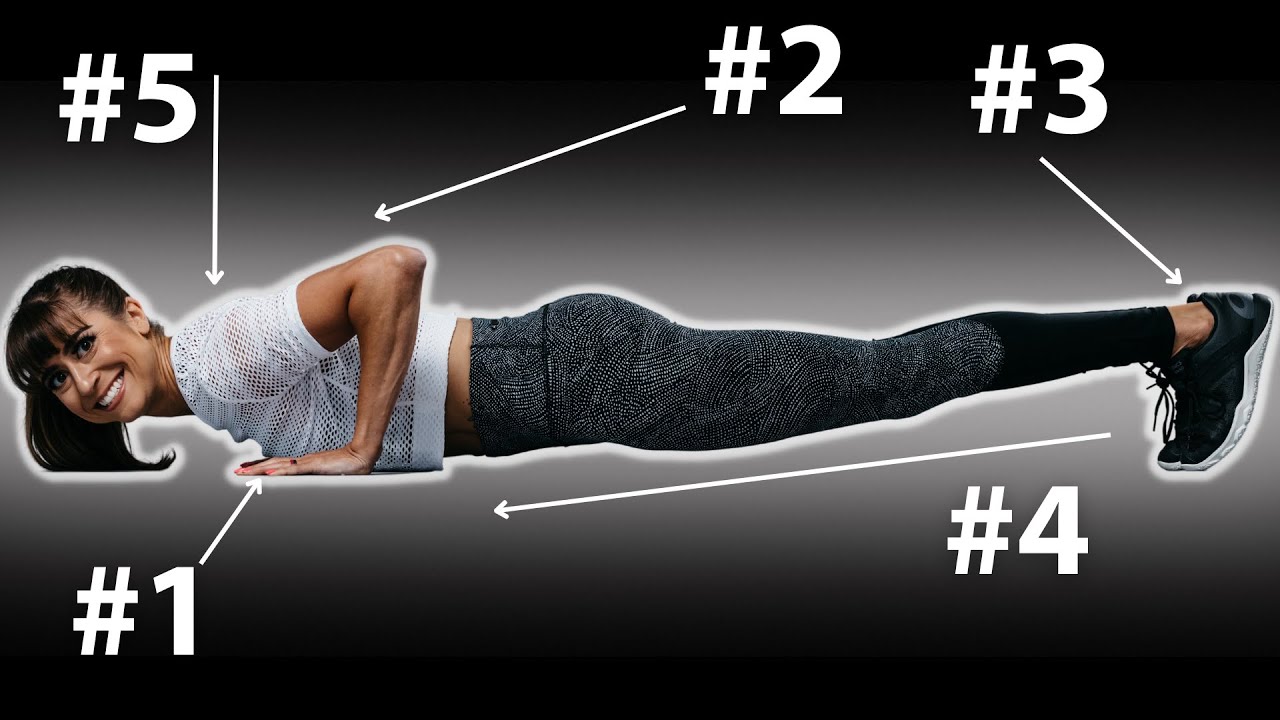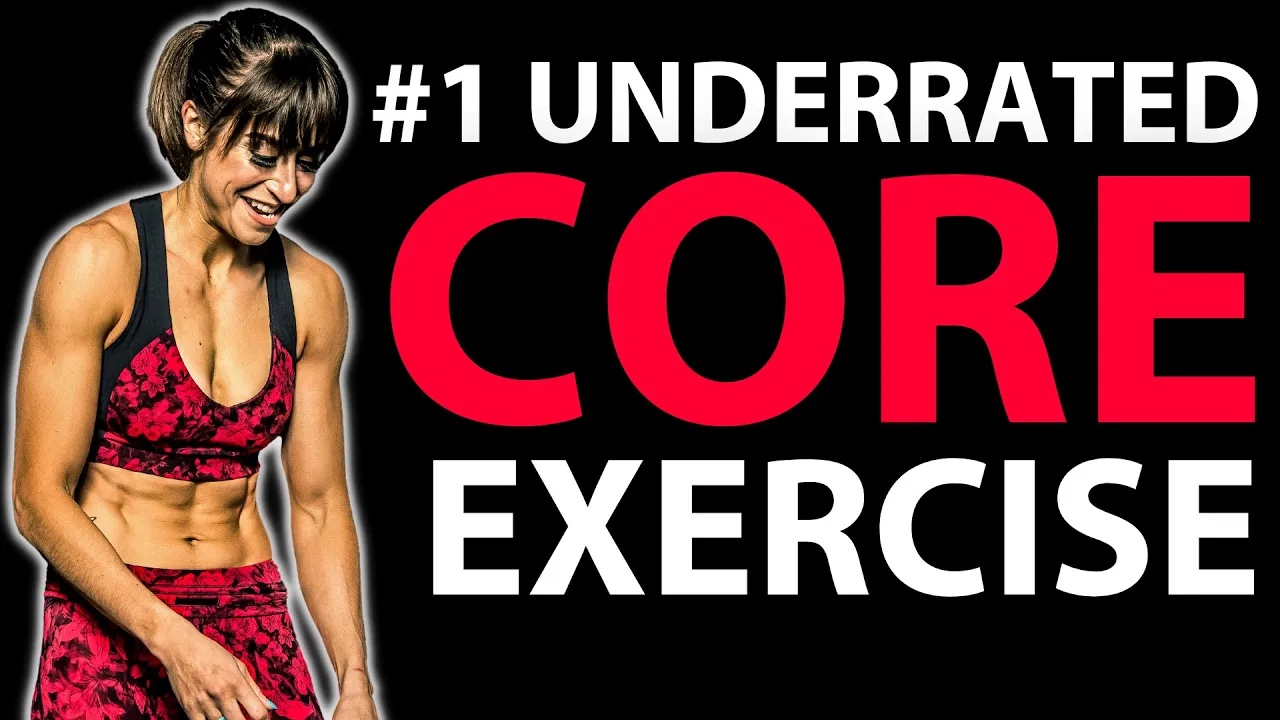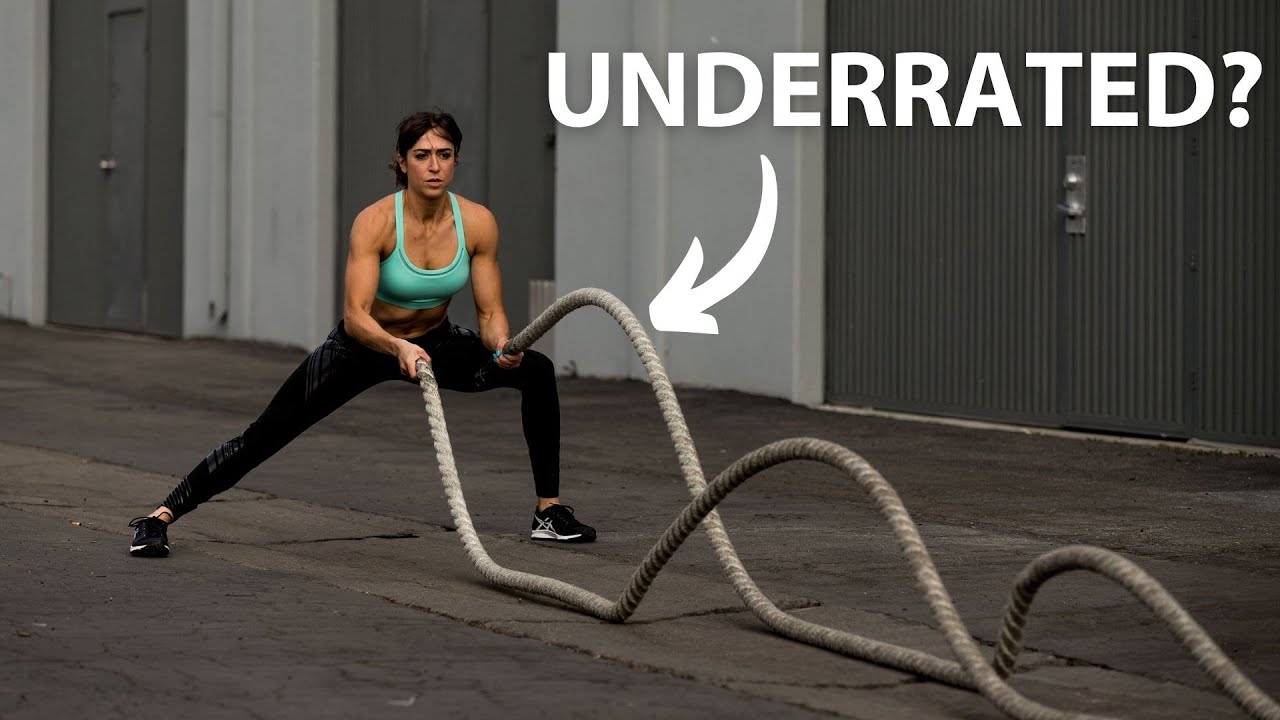
How to do AB WHEEL Rollouts the Right Way (3 Tips!)
Want to work on that six pack and build a strong core?
Then you need to include Ab Extensions or the Ab Wheel Roll Out exercise in your workout routine.
Now if you’re thinking, “I don’t have an ab wheel, byeeee, I’ll share some great variations to use this move without that tool! Even one that requires no equipment at all!”
But first, this move is more advanced than we give it credit for.
And all too often people include this move in hopes of targeting their abs only to end up with lower back aches and pains.
That’s why in this video, I’ll show you how to correct these 3 common form mistakes and truly use this amazing move to target your abs while avoiding lower back aches and pains.
And bonus, I’ll share some great variations to include if you don’t have an ab wheel.
Hey guys, it’s Cori from Redefining Strength where we help you train intentionally to get the best results as fast as possible!
When we include moves like the Ab Wheel Roll Out or Ab Extension, we want to make sure we fully benefit from this exercise.
If we don’t feel our abs working and only feel our lower backs, not only are we not building stronger abs but we are overloading our lower back which can ultimately result in injury.
It’s important to make sure you aren’t making any form mistakes regardless of the tools you use to implement the Ab Extension into your routine.
But before we dive into the common form mistakes and how to fix them, let’s talk about why this exercise is so amazing and important to include in your routine.
When performing the ab extension, you’ll reach your arms out overhead and move into an extended plank position off your knees.
This extended position engages your abs as they work to prevent unwanted extension of your lower back.
However, this position can also lead to lower back overload if your anti-extension strength isn’t developed enough so it’s essential to build up that strength.
The extended plank position is an effective way to target your rectus abdominis or lower abs while engaging your lats, pecs, and triceps in a pull-over movement.
This is a great exercise that works on your core and upper body at the same time.
However there are common mistakes that can hinder your ability to engage your abs correctly.
So, what are these mistakes and how can you avoid them?
The first mistake we make when doing the Ab Extension exercise is allowing our lower backs to arch.
This exercise is designed to strengthen your abs by preventing lower back extension.
If your lower back ends up arching, your abs aren’t working as effectively as they should.
In other words, the move is doing the opposite of what you want it to do.
To fix this issue, focus on setting up with a posterior pelvic tilt and maintaining it throughout the movement.
When setting up, concentrate on tucking your hips under and up slightly towards your ribs.
You should feel your lower back rounding as you tuck your ribs slightly down towards your pelvis.
This movement engages not only your abs, but also your glute max.
Once you’re in the posterior pelvic tilt position, reach out overhead.
You want to roll out only as far as you can while maintaining the posterior pelvic tilt.
This may mean starting with a shorter range of motion than you’re used to, but don’t let your ego get in the way.
As you stay in control and maintain the tilt throughout the extension and pull back in, you can gradually increase the range of motion.
However, don’t be afraid to reduce the range of motion if you need to in order to maintain proper core control while you build strength.
The second mistake people often make when doing the Ab Extension exercise is sitting their butt back first.
This tends to happen because they don’t have the strength to pull back in and protect their back.
However, this ultimately takes the emphasis off of your abs and even upper body and instead places it on flexing and extending more at the knees and hips.
While this may help avoid feeling it in your lower back, it isn’t benefiting your abs.
To fix this mistake, it’s important to focus on engaging your glutes with the posterior pelvic tilt as you set up.
You can give that extra glute squeeze as you begin to roll the wheel back in from the fully extended position.
That extra focus on the glute engagement as you pull to roll back in will help you avoid sitting back up and even better help you brace your core to protect your back.
It’s also key with this you focus on initiating that movement back in with your upper body instead of your lower body.
And just like with learning to engage using the posterior pelvic tilt, it may be helpful to limit the range of motion to start, even placing a wall in front of you to help you control the range of motion you can work through.
The third mistake that people often make when doing the Ab Extension exercise is not engaging their lats.
Many people aren’t focused on what’s actually moving the wheel and instead mimic the movement without concentrating on the muscles that should be powering it.
While the abs work to stabilize and prevent extension of the spine, it’s important not to forget about the lats that power the movement.
The Ab Extension exercise is essentially a plank with a pull-over, and just like the pull-over, you should feel your lats, triceps, and even pecs working.
To ensure that you move as one unit after fully extending out to come back up into the plank position, focus on pushing down into the ground and pulling back on the wheel with your lats.
This lat engagement creates tension through your thoracolumbar fascia into your glutes to support your core and helps activate your abs to avoid extension as you come back up.
If you want to execute this move like a pro, extending all the way out and coming back up in one fluid movement, focus on reaching through your lats to pull yourself back up.
If you’re struggling to focus on your lats engaging, consider doing a single-arm variation to start with sliders. This allows you to reach out on each side independently and then focus on your lat pulling your hand back under your shoulder.
While there are already a few ways to modify the Ab Extension exercise, such as limiting the range of motion or doing a single-arm variation, there are other tools you can use if you don’t have an ab wheel or power wheel.
Three tools that can be used are sliders (or towels), a stability ball, or a suspension trainer.
Using different tools not only adds variety to your workout but can also create instability or resistance in a new way.
Sliders are great for learning how to create tension down into the ground as you power that pull back.
They can also help you learn to better activate your lats with less instability side to side or movement from the wheel.
Additionally, you can easily do a single-arm variation with sliders.
Stability balls can add more instability to the exercise and even allow you to progress into a full plank position off of your forearms.
This variation is helpful for those with wrist issues.
Suspension trainers are another great option, allowing you to modify the exercise by shortening the straps so you aren’t as close to the ground while adding more instability to the move because each strap wants to move on its own.
Ultimately, every tool can help tweak moves to fit your needs and goals, allowing you to implement this amazing extended plank variation without having a wheel.
Bonus Tip:
If you don’t have any of the tools mentioned and still want to experience the benefits of the extended plank position, there’s one bonus option you can try a long lever plank.
Although this variation removes some of the upper body strength demands of the ab wheel variation, it’s still an effective way to engage your lats while working your abs to avoid spinal extension and even engage your quads more.
To perform the long lever plank, start in a high plank or even one from your forearms, then simply walk your feet back to extend out before walking back in.
While extending out, focus on pulling with your lats and avoid letting your hips sag.
This variation is a great option if you don’t have any of the tools mentioned earlier or if you’re looking to switch up your workout routine.
It’s important to remember that there’s always a way to modify moves to fit our needs and goals. Rather than just mimicking a movement pattern, we should focus on what we truly feel working to benefit from the exercise.
Being intentional with our training is key, and the quality of our movements can help us see better results faster.
If you’re looking to achieve that defined six-pack diet is key so make sure to check out this video with a full day of eating to help you lose fat.
–> Meal Plan To Lose Stubborn Belly Fat








